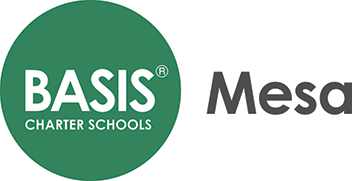Vinesh k's Senior Project Blog
|
|
Project Title: Rain check on rain?: A Life-Cycle Cost Analysis of Atmospheric Water Capture Sorbents BASIS Advisor: Sarah Martinez Internship Location: School of Sustainable Engineering, ASU Onsite Mentor: Shahnawaz Sinha, Associate Research Professor |
Project Abstract
With water scarcity worsening worldwide due to climate change, millions lack access to clean drinking water, particularly in arid and drought-prone regions. Atmospheric Water Harvesting (AWH) presents a promising solution by capturing moisture from the air and converting it into potable water. However, large-scale implementation remains limited by high material costs and energy-intensive regeneration processes. At ASU’s Shahnawaz Lab for Sustainable Engineering, I conducted a life cycle cost analysis of four desiccant materials—zeolite, silica gel, blue silica gel, and activated alumina—across three form factors (powdered, beaded, and coated) to evaluate their economic feasibility for AWH systems. By analyzing moisture adsorption rates, regeneration energy costs, and material longevity, my research optimizes cost-performance trade-offs, identifying the most efficient configurations for scalable deployment. These findings contribute to the development of affordable, energy-efficient water-harvesting technologies, making clean water more accessible in regions facing severe water shortages and advancing sustainable solutions for global water security.
Come see me present my Senior Project on Saturday, 5/17!
Hello everyone! This has been an exciting and mission-driven journey. I recently met with my professor, and we are moving forward on developing a more polished research report to be included in a future research publication! I hope you guys have enjoyed learning and reading more about sustainable water technologies, and I hope to see... Read More
From Hypothesis to Headline: Reporting Results on My Atmospheric Water Harvesting Research
I still remember the scientific method we learned in our middle school science classes. Posters in classrooms mapped out the steps of the scientific method with bright arrows: "Ask a Question → Form a Hypothesis → Conduct an Experiment → Analyze Data → Report Results." "Report Results" always seemed like the simplest step. Back then,... Read More
Looking At The Big Picture: Why This Research Is Critical
According to a recent UN report, more than 40% of the world’s land area is now considered permanently degraded — meaning it’s so dry or damaged that recovery without intervention is nearly impossible. Desertification and land degradation aren't just environmental problems; they threaten the very foundations of human life: food, water, and stability. As I... Read More
Writing a Research Report, how does the process work?
As I move closer to completing my project, I'm now focused on an exciting (and challenging) phase: preparing my results for publication. Turning raw experiments into a structured research article isn't just about presenting data — it's about telling the full story behind the work in a way that’s clear, replicable, and meaningful. Here's a... Read More
The Trade-Off: Measuring Efficiency
So now, we’re going to go back and revisit the equation I brought up a while back: Using the energy costs we determined in the previous blog post, we can now finalize this equation. One important thing to note is that we are doing this for 1kg of material over 1000 cycles. As shown in... Read More
Calculating Energy Costs: Zeolite vs. Silica Gel
When we compare materials like zeolite and silica gel, most discussions revolve around adsorption capacity, lifespan, or cost per kilogram. But one factor often gets overlooked—and it’s one that can silently drain your budget over time: energy consumption during regeneration. Regeneration in this case means driving off the water that was captured to ensure that... Read More
Taking a step back: How I got into research
Hi everyone! I wanted to take a step back this week from strictly discussing my research progress and talk about what drives me in research and sustainability in general. My journey in sustainability started with a bald, charming man named Matt Ferrell. He’s a YouTuber focused on sustainable tech, and I remember falling in love... Read More
Crunching the Costs: Which Sorbent Soaks Up Savings?
This week, I took another big step in understanding the economics of atmospheric water capture. Instead of just looking at raw data, I focused on extracting key numbers and building a cost model to see which sorbents might actually be worth using at scale. To start, I learned how to extract data from charts using... Read More
Asking The Right Questions
This week, I took a closer look at Mona Rafat’s thesis, zeroing in on a key piece of the puzzle: how much water each sorbent actually releases. Understanding this is critical because this directly affects the efficiency of a material. These numbers will directly shape my cost analysis, helping determine whether atmospheric water capture can... Read More
Drinking the Air: My First Dive into Atmospheric Water Capture
For my first week of research, I dove into the world of atmospheric water capture by reading Master’s student Mona Rafat’s thesis. I studied her work to build a strong foundation for my own research/cost analysis. Under the guidance of Professor Sinha, Rafat explores different sorbents, their absorption capabilities, and the various form factors that... Read More
Liquid Gold: The Price of Pulling Water from Thin Air
Hello everyone! My name is Vinesh Kothari, and I’m fascinated by sustainable technologies—especially those that challenge how we source essential resources. Water scarcity is a growing crisis, especially in Arizona, yet the air around us holds an untapped reservoir of moisture in the form of water vapor. But how much does it really cost to... Read More
